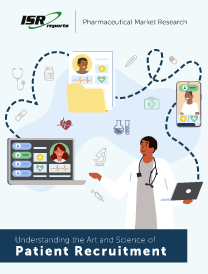
Patient access and recruitment are ongoing bottlenecks in today’s clinical trials, with many sponsors experiencing delays, and even failure, as a result of poor enrollment and/or high dropout rates. Now, as clinical trials become increasingly complex, it is more important than ever to understand how to overcome these challenges in order to accelerate timelines, lower costs, and improve the quality of clinical trial data.
Recognizing the need for more insight on how to navigate this evolving landscape, Industry Standard Research (ISR) has been collecting data on a wide range of areas related to patient access and recruitment. This includes but is not limited to the challenges of finding and retaining clinical trial participants; what specific attributes clinical development outsourcers are focusing on when it comes to securing a reliable provider; and strategies that can help diversify patient recruitment approaches.
This e-book examines the results of this effort, focusing on the use of specialized recruitment companies as one possible strategy and also discussing the nuances associated with rare disease studies and their key differences when compared to more traditional studies. For example, smaller patient populations, among other challenges, mean sponsors must cast a wider net for patient recruitment as well as integrate flexibility for retention. And with an estimated 7,000 rare diseases known to exist and more than 90% with-out an FDA-approved treatment available¹,², this area offers many opportunities to advance healthcare and enhance the quality of life. However, doing so requires sponsors to find enough patients to help expand the industry’s knowledge about the efficacy of these therapies. Therefore, our hope at ISR is that this information provides sponsors with a valuable guide for effectively finding and retaining the patients needed to explore today’s innovative pipeline, as we all work together toward improving and accelerating the future of drug development.
¹ National Organization for Rare Disorders (NORD). May 11, 2002. NORD Applauds Legislative Efforts to Restore Intent of the Orphan Drug Act. https://www.prnewswire.com/news-releases/nord-applauds-legislative-efforts-to-restore-intent-of-the-orphan-drug-act-301545602.html
² FDA. (May 16, 2022). Rare Diseases Cures Accelerator. https://www.fda.gov/drugs/regulatory-science-research-and-education/rare-disease-cures-accelerator
View Resource
